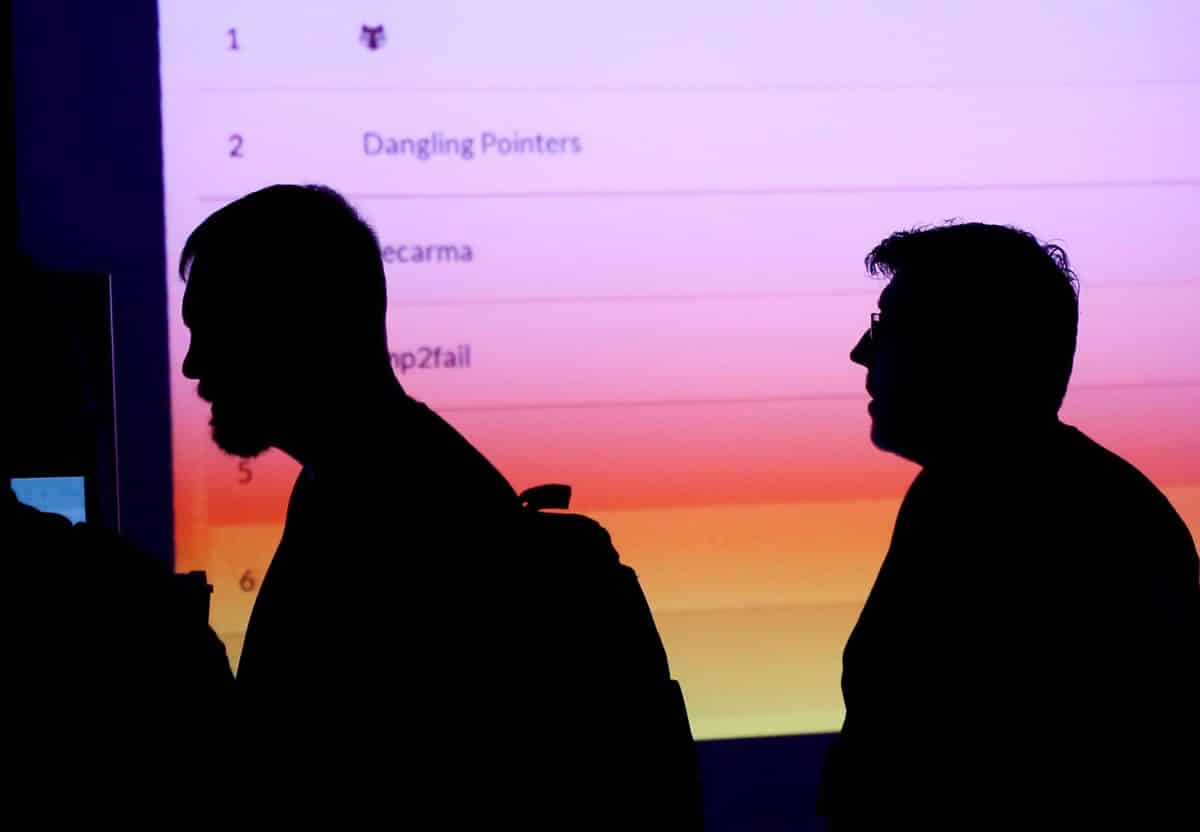Voting systems vendors should make election software open-source for anybody to view and analyze to prevent manipulation of the vote count, according to Gary Miliefsky, executive producer of Cyber Defense Magazine and a founding member of the Department of Homeland Security.
Voters should be properly authenticated when they register to vote and cast their ballots to prevent election fraud, Miliefsky said on Epoch Times’ Crossroads program.
The election gear, the software-hardware system, used during this year election was turned on to connect to the internet which violates the regulations of the Federal Election Commission (FEC) enacted in 2014 that require to keep the election gear offline and not allow any internet connectivity including wireless, Miliefsky said.
Despite that, at least 30 states had election gear that was able to get a software patch or software update over the internet, Miliefsky said.
Other election anomalies also surfaced in various counties and states, such as “more people voted than registered to vote,” hundreds of thousands of ballots with just one checkbox for Joe Biden showed up on the election night at 4 am, Miliefsky said.
There are thousands of affidavits in the president’s hands right now about election fraud across the nation, Miliefsky said. “There’s rampant fraud, there’s enough evidence that you can’t summarily dismiss.”
Vulnerabilities

Participants are silhouetted as they pass through the IOT (Internet of Things) Village during the Def Con hacker convention in Las Vegas, Nev., on July 29, 2017. (Steve Marcus/Reuters/File Photo)
Every piece of electronic equipment that is capable to connect to the internet either via a wireless router or an Ethernet cable “is a vulnerable piece of equipment that can be hacked remotely” either domestically or from other countries, Miliefsky said.
At DEF CON, one of the largest and oldest hacker conventions held annually in Las Vegas, all voting gear was hacked within minutes, Miliefsky said. For example, “one person was able to get into the Dominion gear in two minutes,” he added.
The media used to cover DEF CON events “every year and since 2018 they’ve quieted down,” Miliefsky said.
Hacking voting machines is easy if a hacker has physical access to a piece of equipment, Miliefsky explained, “you can pull out the hard drive and then get admin permission to change voting, you can change the way the equipment” allocates votes to candidates.
If one citizen casts a vote for one candidate the voting system can either allocate only one vote to that candidate or allocate 200 votes to the candidate for one citizen who voted, Miliefsky continued adding that this manipulation is hard to detect unless somebody has physical access to this hard drive and can forensically analyze it.
To make it even more difficult to detect a vote weighting algorithm can be used to give only 0.8 votes to candidate A but 1.2 votes to candidate B, Miliefsky said. So it is not one person, one vote.
This way, if 5 people voted for candidate A this candidate will receive only 4 votes for 5 ballots cast. If 5 people voted for candidate B he or she will receive 6 votes for 5 votes cast. As a result, 20 percent of votes will be taken from candidate A and given to candidate B.
This algorithm is called the “salami method,” Miliefsky said, as it resembles slicing salami into thinner or thicker pieces. Some people may get sandwiches with thinner slices while some will get thicker slices in a sandwich, he explained. Algorithms can be even more complex and sophisticated, according to Miliefsky.
Hackers were also able to connect remotely to the voting gear over the internet and send to it software updates and patches that change the way the voting machines function, Miliefsky said.
“I believe in this election there was a patch update at least on the Dominion System in 30 states, where the patch needs to be reviewed and analyzed,” Miliefsky said, adding that “the Department of Justice needs to get a hold of the Dominion gear that was used in all these states” and other vendor’s gear as well and “analyze why were they connected to the internet which violates the FEC’s ruling from 2014.”
According to Miliefsky, no algorithm should be used in vote counting: voting systems “should not be complex it should be simple code instead it’s algorithmic code that already is a red flag.”
“Software is extremely vulnerable,” Miliefsky said, and it should not be used in election equipment that has internet connectivity or can be physically accessed.
How to Restore Election Integrity

A sign reminds voters they need photo ID to vote on Election Day at a polling station at Hillsboro Presbyterian Church, in Nashville, Tenn., on Nov. 6, 2018. (Drew Angerer/Getty Images)
Software and its patches should be open source so it is available for all citizens who can read it and understand how it functions including mathematicians, computer scientists, and cybersecurity experts who can validate if it works properly, Miliefsky said.
For example, the encryption algorithm, used in online shopping transactions by big merchants such as Amazon or Walmart known as Secure Sockets Layer (SSL) and Transport Layer Security (TLS) is open-source software, Miliefsky said. Its purpose is to ensure the security of card payments in online transactions and “it’s completely open” for the National Security Agency (NSA), as well as for mathematicians and scientists to analyze it.
Currently, no election software used across America is available for public viewing or for experts to explore, he added.
To prevent fraud in the American election, Miliefsky recommends using a driver’s license to register to vote and something like fingerprints which is called multi-factor authentication.
Multi-factor authentication requires the user to provide to the system two or more of three pieces of information related to something you know (like a password or PIN), something you have (like a card or ID), or something you are (like your fingerprint or other biometric data).
Multi-factor authentication on voting would really ensure that a person really voted at a polling station, got only one vote, and his or her vote counted, Miliefsky said.
This concept is similar to voter authentication implemented in Iraq during Operation Iraqi Freedom known as “vote purple finger”, Miliefsky said. Iraqis dipped their finger in purple ink after casting their ballots to show that they voted and to prevent double voting.
During “Operation Iraqi Freedom, after billions of dollars were spent, we gave a small country in the Middle East the ability to have un-hackable votes that we don’t have here in America,” he added.



